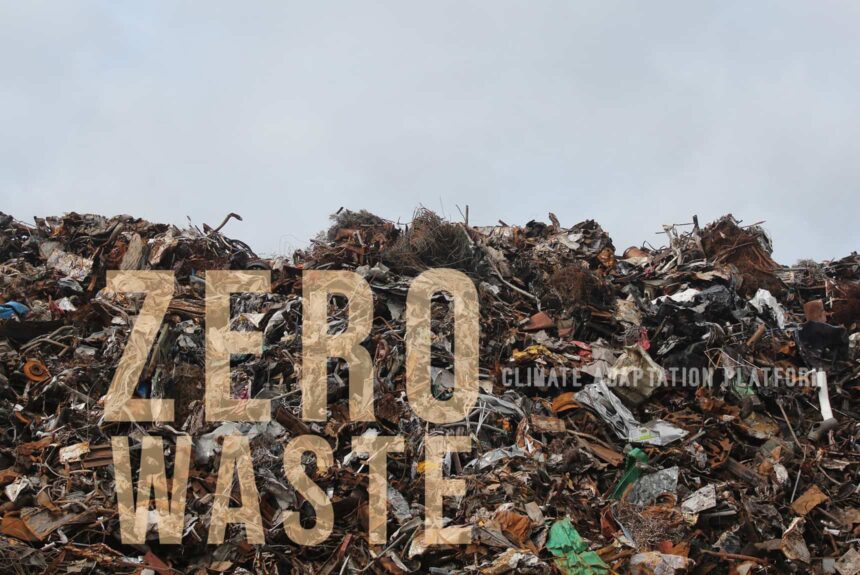Our previous blog post, “Achieving Zero Waste“, discusses the problems of our ever-increasing waste due to our highly disposable culture and consumeristic society contributing to our GHG emissions that warm the planet.
Annually, the world produces two billion tons of municipal solid waste, and less than 20% of it is recycled. By 2050, our waste is expected to increase by 70% to 3.4 billion metric tons (Chepa Waste, 2022).
Of all the waste we generate every year, around 37% of solid waste goes to landfill, 33% to open dumps, 11% to incinerators, and only 14% of municipal waste are recycled globally.
Recycling is the best method for managing waste, and we should endeavour to recycle more percentage of our waste. Incinerators can turn waste into energy; however, they also spew carbon dioxide into the atmosphere, and landfills and open dumps are significant sources of methane, a potent heat-trapping gas.
E-waste poses a growing problem worldwide, generating more than 50 million metric tons in 2019. Electronic waste consists of discarded electronic devices with a battery or plug that are no longer wanted (Global waste, 2023).
E-waste is highly toxic if not treated properly, and most of them are shipped to poor countries in Asia and Africa.
E-waste is highly toxic. The heavy metal and toxic chemicals it contains, such as arsenic, lead, cadmium, chromium, vinyl chloride, etc., can pollute and poison the surrounding communities, including children and those working in the dumpsite without proper protection (A world of, 2023).
Wealthy countries are exporting their waste to developing ones when they have the technology and resources to process this waste, and the latter has not. According to an article from The Word Counts, the biggest dumpsites in the world are Accra, Ghana, Bekasi, Indonesia, and Pakistan.
Climate advocates are pushing for a zero-waste and circular economy to manage better and reduce the waste and emissions it generates and its harmful effects on our health and environment. Both have similarities in their efforts to reduce and eliminate waste by using the strategies of reduction, reuse, recovery, repair, and recycling.
Circular economy examples
An example is having a garden and growing a variety of fruits and vegetables, then using your greywater from your sink or bathtub or rainwater to water them. After harvesting the produce, you compost your garden and food waste to nourish the next growing season.
Another example is a company that collects pet bottles or plastic waste and then uses them to make other useful materials like fabric for clothes, furniture, or construction material, creating a business of upcycling waste. Using waste, something that has no or less value and making it into something of value.
Zero-Waste is a concept that conserves resources and wastes through the product’s design from the cradle to the grave. The product can be repaired, recycled, and reused rather than disposed of it when it has a problem. This reduces waste significantly, and the tiny percentage left can be brought to the incinerators to be burned for energy.
The article “Zero Waste vs Circular Economy – Your Guide to Getting In the Loop” explains further. Read more by clicking the link provided in the “Source” section below.
An EcoWatch article, “Zero Waste 101: Everything You Need to Know”, also explains what zero-waste is and when it started. It also includes the businesses that have begun to apply the concept and gives tips on how we can use the concept in our daily routine.
Sources:
A world of waste. (2023). The World Counts. Retrieved from https://www.theworldcounts.com/challenges/planet-earth/state-of-the-planet/world-waste-facts
Global waste generation – statistics & facts. (2023, February 8). Statista. Retrieved from https://www.statista.com/topics/4983/waste-generation-worldwide/#topicOverview
Global Waste Statistics – 2022. (2022 June). Cheapa Waste Skips. Retrieved from https://cheapawasteskips.com.au/global-waste-statistics-2022
Zero Waste vs Circular Economy – Your Guide to Getting In the Loop. (2021 January 27). Zerowaste. Retrieved from https://www.zerowaste.com/blog/zero-waste-vs-circular-economy-a-guide/
Bennett, P. (2023 February 5). Zero Waste 101: Everything You Need to Know. EcoWatch. Retrieved from https://www.ecowatch.com/zero-waste-guide.html



Leave a Reply